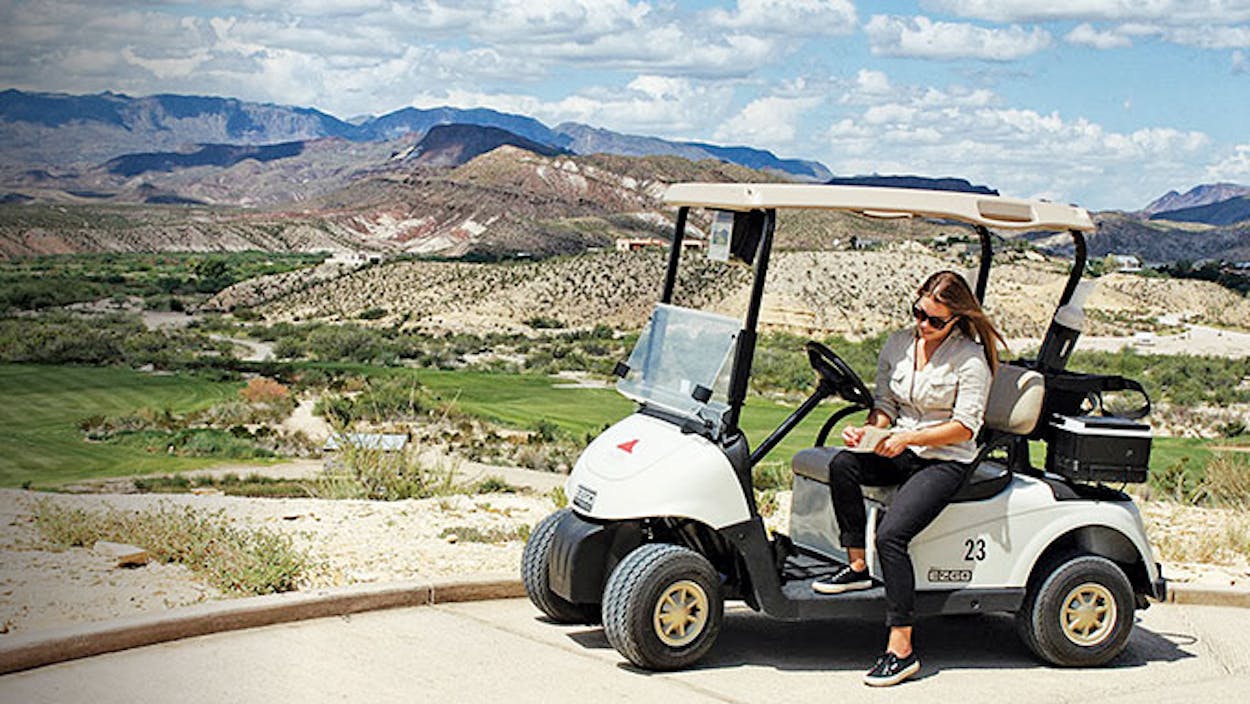Day 1 They’d made the nine-hour trek from Dallas to elope. We’d driven in from Austin, a mere eight hours away, to detox from city life. Technically, my friends and I were eavesdropping on the loved-up couple as they discussed logistics with their officiant, the bartender at Terlingua’s Starlight Theatre (631 Ivey, 432-371-3400), a thirties movie house that’s now the social and gustatory hub of this arid outpost in the middle of the Chihuahuan Desert. But by the time my cup of chili arrived, I felt more like a co-conspirator than a stranger. “No friends or family,” said the bride-to-be to another curious party. “Just us.” As I caught a glimpse of her face, I realized that she was a friend of a friend, but I didn’t dare burst their bubble of privacy. That’s the funny thing about decamping to far West Texas, one of the remotest, harshest, weirdest, most contradictory places on earth: you come for the solitude and wind up enjoying its intimacies alongside the types of people who prefer unobstructed horizons to other humans.
And yet, despite all that, this “ghost town,” an old mercury-mining settlement that went bust in the forties, is still plenty lively. Every afternoon, a handful of locals, each with a Coors Light and a doozy of an origin story (go ahead, ask ’em), convene on the long, shaded porch of the Terlingua Trading Company (100 Ivey, 432–371-2234). The evening’s entertainment is twofold: watching the sunset paint kaleidoscopic pink strokes across the Chisos Mountains and trying to guess whether the day’s foreigners are from Austin or Brooklyn.
I wondered where the honeymooners would be holing up. Perhaps in one of the rooms at the stacked-rock La Posada Milagro (100 Milagro, 432-371-3044) just down the road or, more likely, in some secluded eco-friendly guesthouse on one of the area’s private ranches. Our own accommodations were another dozen miles southwest, in Lajitas. Once a U.S. cavalry post, established to repel Pancho Villa’s banditos, the town is now essentially a 27,000-acre, one-hundred-room resort, with an eighteen-hole golf course, a spa, the glassed-in Candelilla Café, and the Thirsty Goat Saloon, named for the beer-guzzling former mayor, Clay Henry III, who happened to be a goat. Since the late seventies, Lajitas has been a vanity project for a succession of wealthy developers, including Austin entrepreneur Steve Smith, who bought it for $4.25 million in 2000 and spent upward of $80 million trying to fashion it into a five-star “hideout” for the one percent. That untenable dream, which Terlingua’s porch-sitting peanut gallery referred to as the High Doubt, dissolved into foreclosure in 2007.
I was curious to see how the new owners, a group of wealthy Dallasites, had reimagined it. Despite arriving in the dark, we were in no danger of overlooking the faux Old West boardwalk or the wagon-wheel benches. Luckily, we hadn’t driven all the way to West Texas expecting the Ritz.
Day 2 The fine folks at Far Flung Outdoor Center (100 Main, 432–424-5000) shuttled us north, past the mile-and-a-half-long Lajitas Mesa, with its facade of ancient lava flows, to a river put-in just off FM 170 in Big Bend Ranch State Park (1900 Sauceda Ranch Road, 432–358–4444). Our guides, Laura and Tim, assured us that no previous rafting experience was necessary. The Rio Grande is not particularly rápido, though it occasionally rises enough to wreak havoc (Lajitas’s golf course had to be completely rebuilt after a devastating flood in 2008).
The most strenuous part of our three-hour float down the opaque liquid border from Madera Canyon to Grassy Banks was snapping on our life jackets. In our raft, Laura did all the paddling while answering my many questions: What’s all this tall grass? (Invasive river cane.) Ever make camp on the Mexican side? (Not often.) Any fish in this water? (All-you-can-catch catfish.) The answer to my lunch query steered us back to Terlingua for chalupas and enchiladas verdes at Rio Bravo, FM 170, 432-371-2101, a tiny one-room establishment with bright-yellow walls and a familiar face at the table next to us: Jan, who’d been our waitress at the Starlight. I glanced around the packed room at the other diners, whom I suspected we’d be seeing again.
Just as quintessentially West Texas, if less genuine, was the fake adobe village at Contrabando, an abandoned movie set nine and a half miles west of Lajitas. Its “ruins” are younger than I am, built for the 1986 comedic western Uphill All the Way, starring Roy Clark, Mel Tillis, and Burl Ives. But it wasn’t till later that night, back in Terlingua at La Kiva (FM 170, 432-371-2250) a cavelike hangout seeping with premeditated bizarreness, that I began to give in to the authentic allure of the inauthentic.
Day 3 Aside from a six-hour storm-induced power outage, we were spared most of the challenges that toughen more-permanent desert dwellers—namely the severe weather. At the state park’s eastern entrance, the botanical garden looked more like a cactus graveyard due to a hard freeze two Februaries ago. But Lajitas’s emerald-green, 72-par course was in pristine form. Lacking the patience for eighteen holes, we rented a brand-new GPS-enabled cart and embarked on an hour-long photo safari. The flawlessness of this largely man-made oasis only emphasized the natural imperfections of the jagged escarpments that surround it. Or maybe it was the other way around.
Another pink desert sunset lured us back to Terlingua. The Starlight’s bartender, looking spiffy in a button-up, was on the porch handing out tequila shots as a small party encircled the just-married Dallasites, she in pale yellow clutching a bouquet of wildflowers, he in a felt cowboy hat, and both in worn brown boots. No friends. No family. Just them. And all of us.








